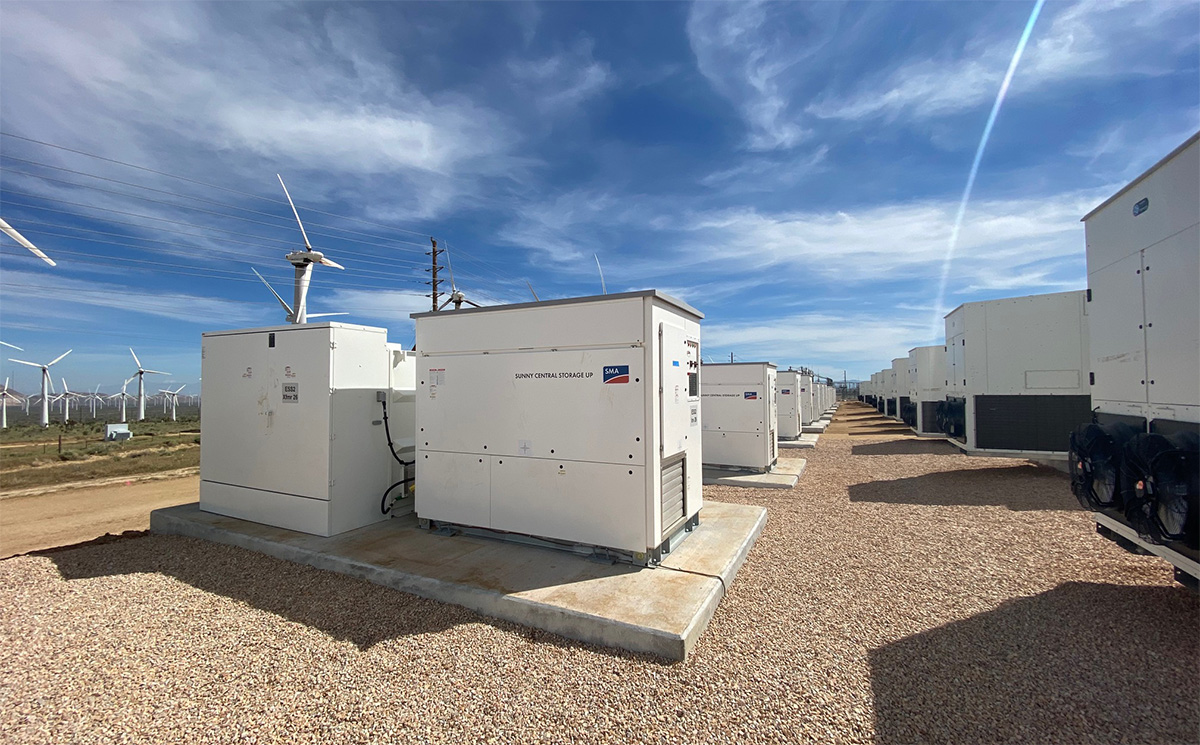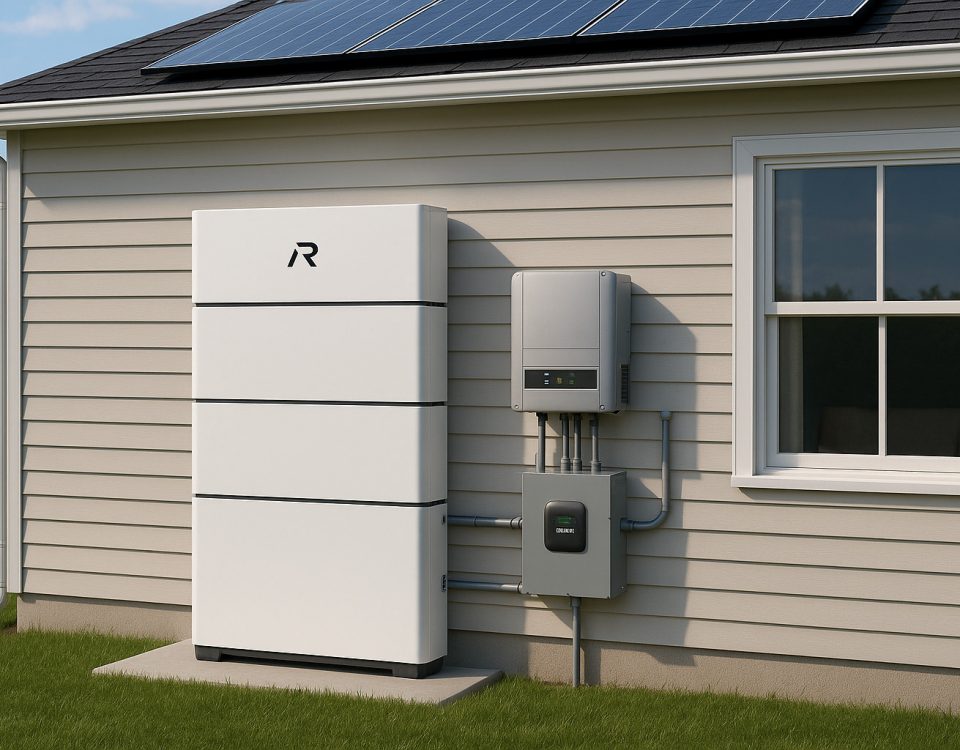How Portable Battery Systems Deliver Flexibility, Savings, and Reliability for Modern Businesses
In today’s fast-evolving energy landscape, small commercial and industrial enterprises face mounting pressure to manage costs, ensure reliable power, and reduce environmental impact. Mobile Sistemas de almacenamiento de energía (ESS) offer a compelling solution: portable, scalable, and intelligent battery-based systems that adapt to diverse use cases—from construction sites to pop-up retail, emergency backup, and beyond. This article explores real-world considerations for deploying mobile ESS in U.S. markets, explains the unique benefits over conventional approaches, and illustrates how RICHYE’s high-quality lithium battery technology underpins reliable, efficient mobile energy solutions.
Understanding Small C&I Energy Needs
Small commercial and industrial (C&I) operations often exhibit variable energy patterns:
-
Intermittent Demand: Retail outlets, workshops, light manufacturing, and seasonal facilities may show peak consumption during business hours or production cycles, followed by minimal load during off-hours.
-
Time-of-Use Cost Sensitivity: With many utilities adopting time-of-use (TOU) pricing, energy costs can spike during peak periods. Without storage, businesses pay premium rates or risk operational disruptions if shifting loads is impractical.
-
Reliability Requirements: Even short outages or voltage fluctuations can damage sensitive equipment, halt production lines, or disrupt services. Maintaining stable, continuous power is critical to productivity and customer trust.
Recognizing these traits helps identify why a mobile ESS can be more attractive than fixed or fuel-based alternatives, offering dynamic deployment where and when it’s needed.
Limitations of Traditional Solutions
Before examining mobile ESS, consider the drawbacks of common approaches:
-
Diesel Generators: Widely used for backup or off-grid power, generators deliver high capacity but suffer from high fuel and maintenance costs, noise, emissions, and limited remote monitoring. Fluctuating fuel prices and logistical challenges in fuel supply further erode reliability and increase operating expenses.
-
Fixed Energy Storage Installations: Stationary battery systems require significant upfront investment in equipment, installation, permits, and site preparation. Their bulk and weight make relocation difficult if business needs change (e.g., moving to a new facility or serving temporary sites).
-
Centrales eléctricas portátiles: Consumer-grade portable battery units suit small electronics or light tools but lack the capacity, power output, and surge-handling capabilities needed for industrial equipment or prolonged operations. Many cannot recharge from generators, and their ingress protection (IP) ratings may not withstand harsh outdoor conditions.
-
Grid Dependence Alone: Relying solely on the grid exposes operations to utility outages or voltage sag. For businesses in areas with unstable supply or frequent storms, downtime can incur substantial costs.
Advantages of Mobile ESS for Small C&I
Mobile ESS integrates high-performance lithium batteries, intelligent power electronics, and user-friendly interfaces into compact, transportable modules. Key benefits include:
-
Rapid Deployment and Portability
-
Plug-and-Play Setup: Preconfigured rack or containerized units arrive ready for connection, minimizing installation time. On a construction site, event venue, or temporary location, teams can deploy mobile ESS within hours, avoiding lengthy site engineering.
-
Transport Flexibility: Mounted on trailers or skid platforms, mobile ESS moves easily between sites. For businesses with shifting project locations—such as outdoor events, disaster relief, or remote worksites—this flexibility maximizes asset utilization.
-
-
Scalability to Match Demand
-
Modular Expansion: Systems can connect multiple units in parallel or series, scaling capacity (kWh) and power output (kW) to suit evolving needs. A small retailer may start with one module for peak shaving; later, they can add units for larger peak loads or extended backup.
-
Load-Adaptive Operation: Intelligent energy management adjusts discharge rates to support sudden load spikes—like motor startups or HVAC surges—without generator run-ups. This dynamic response reduces equipment stress and avoids tripped circuits.
-
-
Cost Savings and Revenue Opportunities
-
Time-of-Use Arbitrage: Charge batteries during low-rate periods (overnight or midday solar excess) and discharge during peak-rate hours, cutting electric bills. Mobile ESS empowers small businesses to participate in demand response programs, offering grid services in exchange for incentives.
-
Reduced Generator Runtime: When paired with a generator, the ESS can handle transient loads and optimize generator operation at efficient load points, saving fuel and reducing wear. In some cases, the generator may run less frequently or at lower capacity.
-
Lower Maintenance Overhead: High-quality lithium batteries demand minimal routine maintenance compared to lead-acid alternatives, reducing labor and service costs.
-
-
Environmental and Resilience Benefits
-
Emission Reduction: By limiting generator runtime and integrating with on-site renewables (e.g., solar arrays), mobile ESS cuts greenhouse gas emissions and local pollutants. This aligns with corporate sustainability goals and may satisfy ESG requirements.
-
Grid Independence and Backup: In regions prone to outages or for critical operations (medical sites, communications equipment, refrigeration), mobile ESS ensures continuity without immediate dependence on fuel deliveries. For emergency responders or disaster relief, portable energy storage can power field hospitals, command centers, or lighting systems.
-
Integration with Renewables: Mobile ESS units often include MPPT charge controllers for solar or support simultaneous charging from multiple sources. Excess renewable generation is stored rather than curtailed, maximizing return on investment.
-
-
Robust Design for Harsh Conditions
-
Durable Enclosures: Industrial-grade mobile ESS feature weather-resistant cabinets with IP ratings (e.g., IP54 or higher) to guard against dust, moisture, and temperature extremes. Rugged construction withstands vibrations and shocks during transport.
-
Sistemas avanzados de gestión de baterías (BMS): Integrated BMS monitors cell voltages, balances modules, and protects against over-charge, over-discharge, over-current, and temperature anomalies. This ensures safety and prolongs battery life.
-
Remote Monitoring and Control: Connectivity options (4G, LTE, or satellite links) enable real-time status tracking, remote scheduling of charge/discharge cycles, firmware updates, and fault diagnostics—minimizing on-site interventions.
-
Designing a Mobile ESS Deployment
For a practical deployment, consider these steps:
-
Assess Energy Profile
-
Load Audit: Document typical and peak loads: machinery, lighting, HVAC, IT equipment, or temporary tools. Estimate daily energy consumption (kWh) and maximum power draw (kW), including surge demands.
-
Duty Cycle and Duration: Determine required runtime during outages or peak-shaving periods. For example, a small food processing facility may need 4 hours of backup at a 20 kW average load.
-
-
Select System Capacity and Power
-
Capacity (kWh): Based on energy needs and desired autonomy. If average consumption is 50 kWh/day, choose modules totaling slightly above that (e.g., 60 kWh) to account for inefficiencies and buffer.
-
Power Rating (kW): Must handle peak simultaneous loads. If surge loads are high (e.g., motor starts at 2× running load), ensure inverter or hybrid inverter can supply short-duration peaks.
-
Modularity: Choose units that can be paralleled to increase capacity/power later. This allows initial investment aligned with current demand and expansion as business grows.
-
-
Integrate Charging Sources
-
Grid Charging: Leverage off-peak grid rates or demand-response signals. Ensure onboard charger or inverter-charger supports programmable charge schedules and adheres to utility interconnection rules.
-
Generator Integration: If off-grid or unreliable grid, configure the ESS to charge from a generator. Intelligent control ensures the generator runs at optimal load for fuel efficiency.
-
Renewables: For sites with available solar or wind, the ESS charges from renewable arrays when generation exceeds onsite consumption. Use MPPT controllers sized for panel capacity.
-
-
Ensure Safety and Compliance
-
Certifications: Verify that battery modules and inverters meet relevant U.S. standards (UL, IEEE, NFPA) and local codes. For lithium batteries, look for UL 1973 or equivalent certifications.
-
Gestión térmica: Confirm operating temperature ranges and implement cooling or heating if needed. Batteries perform best within specified temperature windows.
-
Site Preparation: Even portable units need level, secure placement and proper clearances. Provide ventilation if modules generate heat, and ensure fire suppression or monitoring as per regulations.
-
Operator Training: Educate personnel on safe operation, emergency procedures, and routine inspections (cable connections, enclosure integrity).
-
-
Monitoring and Maintenance
-
Remote Telemetry: Use cloud-based dashboards to monitor state-of-charge, cycle counts, voltage, current, and temperature. Set alerts for anomalies (e.g., unexpected discharge, high temperature).
-
Inspecciones regulares: Periodically check for physical damage, water intrusion, or loose connections. Verify firmware updates for inverters and BMS to maintain optimal performance and security.
-
Lifecycle Planning: Track battery health metrics to predict end-of-life and schedule replacements. High-quality lithium solutions typically offer thousands of cycles; plan for gradual capacity fade over years.
-
Introducing RICHYE: Excellence in Lithium Battery Technology
Rico is a professional lithium battery manufacturer renowned for exceptional quality, performance, safety, and competitive pricing. RICHYE’s cells and modules undergo rigorous testing and integrate advanced Battery Management Systems, delivering stable voltage, long cycle life, and robust thermal behavior. For mobile ESS applications, RICHYE batteries offer high energy density in compact form factors and can sustain frequent cycling with minimal capacity degradation. Their transparent specifications, adherence to U.S. market standards, and responsive technical support make RICHYE a reliable partner for system integrators and end users seeking durable, efficient energy storage for small C&I projects.
Example Scenario: Mobile ESS for a Temporary Event Venue
Imagine organizing a weekend outdoor festival requiring power for lighting, sound systems, food vendors, and ticketing equipment. Grid access is available but grid capacity is limited during peak hours, and utility rates spike in the evening. A mobile ESS deployment might include:
-
Load Profile: Evening peak load of 50 kW for 4 hours; daytime loads of 20 kW for 6 hours; vendor stalls requiring unpredictable draws.
-
Capacity Sizing: To cover evening peak, energy needed = 50 kW × 4h = 200 kWh. Daytime loads may be served by grid or partially by ESS to shave peaks.
-
System Configuration: Three 70 kWh mobile ESS modules based on RICHYE batteries, paralleled to deliver 210 kWh usable. Inverters rated for 60 kW continuous with 120 kW short-term surge capability handle sudden loads.
-
Estrategia de tarificación: Charge modules during daytime low-rate periods from grid or onsite solar (if available). In hybrid mode, coordinate generator start when needed for extended events.
-
Deployment: Units arrive on trailers, are set up onsite with minimal wiring. Remote monitoring tracks state-of-charge, enabling event managers to adjust usage in real time.
-
Outcome: The festival runs smoothly without overloading the local grid, energy costs are managed via peak shaving, and attendees enjoy uninterrupted services.
Conclusión
Mobile ESS solutions powered by high-quality lithium batteries unlock new flexibility, cost savings, and resilience for small commercial and industrial users. By assessing load profiles, selecting appropriate capacity and power, integrating charging sources, and ensuring safety and monitoring, businesses can deploy portable energy storage that adapts to dynamic demands—from construction sites to events, emergency backup to peak shaving. Leveraging RICHYE’s proven lithium technology further enhances reliability, longevity, and performance. With thoughtful planning and robust components, mobile ESS becomes a strategic asset, empowering businesses to manage energy intelligently, lower operational costs, and support sustainability goals—all in a transportable, scalable package.




